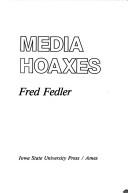| Listing 1 - 10 of 114 | << page >> |
Sort by
|
Book
Abstract | Keywords | Export | Availability | Bookmark
 Loading...
Loading...Choose an application
- Reference Manager
- EndNote
- RefWorks (Direct export to RefWorks)
eebo-0018
Book
Abstract | Keywords | Export | Availability | Bookmark
 Loading...
Loading...Choose an application
- Reference Manager
- EndNote
- RefWorks (Direct export to RefWorks)
humanism --- jokes --- Erasmus, Desiderius
Book
Abstract | Keywords | Export | Availability | Bookmark
 Loading...
Loading...Choose an application
- Reference Manager
- EndNote
- RefWorks (Direct export to RefWorks)
eebo-0018
Book
ISBN: 9780547572536 Year: 2012 Publisher: New York, Boston : Mariner Books,
Abstract | Keywords | Export | Availability | Bookmark
 Loading...
Loading...Choose an application
- Reference Manager
- EndNote
- RefWorks (Direct export to RefWorks)

ISBN: 0813811171 Year: 1989 Publisher: Ames Iowa State university press
Abstract | Keywords | Export | Availability | Bookmark
 Loading...
Loading...Choose an application
- Reference Manager
- EndNote
- RefWorks (Direct export to RefWorks)
Hoaxes --- Mass media --- Practical jokes
Book
ISBN: 9783110759853 3110759853 Year: 2024 Publisher: Berlin Boston
Abstract | Keywords | Export | Availability | Bookmark
 Loading...
Loading...Choose an application
- Reference Manager
- EndNote
- RefWorks (Direct export to RefWorks)
Who is morally permitted to tell jokes about Jews? Poles? Women? Only those in the group? Only those who would be punching up? Anyone, since they are just jokes? All of the standard approaches are too broad or too narrow. In on the Joke provides a more sophisticated approach according to which each person possesses "joke capital" that can serve as "comic insurance" covering certain jokes in certain contexts. When Bob tells a joke about Jews, we can never know exactly what Bob is intending since we cannot see inside Bob's mind. But we could reasonably infer, if we knew Bob himself was Jewish, if he worked tirelessly for Jewish causes, or was a card-carrying Neo-Nazi. Each would affect his joke capital, and, in certain circumstances, we would have a moral standing to demand to see his ledger to see how much joke capital he had with respect to Jews. The permissibility of that joke depends upon four factors: the joke, the teller of the joke, the audience, and the setting. The view developed in In on the Joke is the only view that clearly explains how each of these components work together in an integrated, effective ethic of humor.
Humor. --- ethics. --- jokes. --- social contract.
Book
Year: 1963 Publisher: Palo Alto, Calif : Pacific Books,
Abstract | Keywords | Export | Availability | Bookmark
 Loading...
Loading...Choose an application
- Reference Manager
- EndNote
- RefWorks (Direct export to RefWorks)
"This book is a distillation of thoughts and findings encountered in the process of working as Research Assistant in the Department of Anthropology at Stanford University. I was working in association with Gregory Bateson and the other members of our research staff in an exploration of the functions of the paradoxes of abstraction in implicit communication, humor, mental illness, psychotherapy, and culture. The, first part of the book, consisting of two chapters, serves mainly as a very general introduction to the subject of humor. The second part of the book is a group of four chapters which have little apparent interrelationship (except that they are all about humor in one way or another). Weakly related as they are, however, these chapters serve to introduce a variety of ideas important to the climax, and concluding part, of the book. This third part is divided into two closely connected chapters--one historical and the other expositive. These chapters are the real raison d'etre of the book and present the theory of the structure of humor that developed during my research studies mentioned above"--Preface. (PsycINFO Database Record (c) 2009 APA, all rights reserved).
Book
Abstract | Keywords | Export | Availability | Bookmark
 Loading...
Loading...Choose an application
- Reference Manager
- EndNote
- RefWorks (Direct export to RefWorks)
Iconography --- humor --- nudes [representations] --- jokes --- mentaliteitsgeschiedenis --- moraliseren --- literatuur, Nederlanden --- anno 1600-1699 --- ethics [philosophical concept]
Book
Abstract | Keywords | Export | Availability | Bookmark
 Loading...
Loading...Choose an application
- Reference Manager
- EndNote
- RefWorks (Direct export to RefWorks)
humor --- jokes --- gouden eeuw (Holland) --- Mauritshuis [The Hague] --- anno 1600-1699
Book
Year: 1930 Publisher: [Louvain] : Editions Rex,
Abstract | Keywords | Export | Availability | Bookmark
 Loading...
Loading...Choose an application
- Reference Manager
- EndNote
- RefWorks (Direct export to RefWorks)
Practical jokes --- Universities and colleges --- Farces et attrapes --- Universités --- Degrelle, Léon,
| Listing 1 - 10 of 114 | << page >> |
Sort by
|

 Search
Search Feedback
Feedback About UniCat
About UniCat  Help
Help News
News